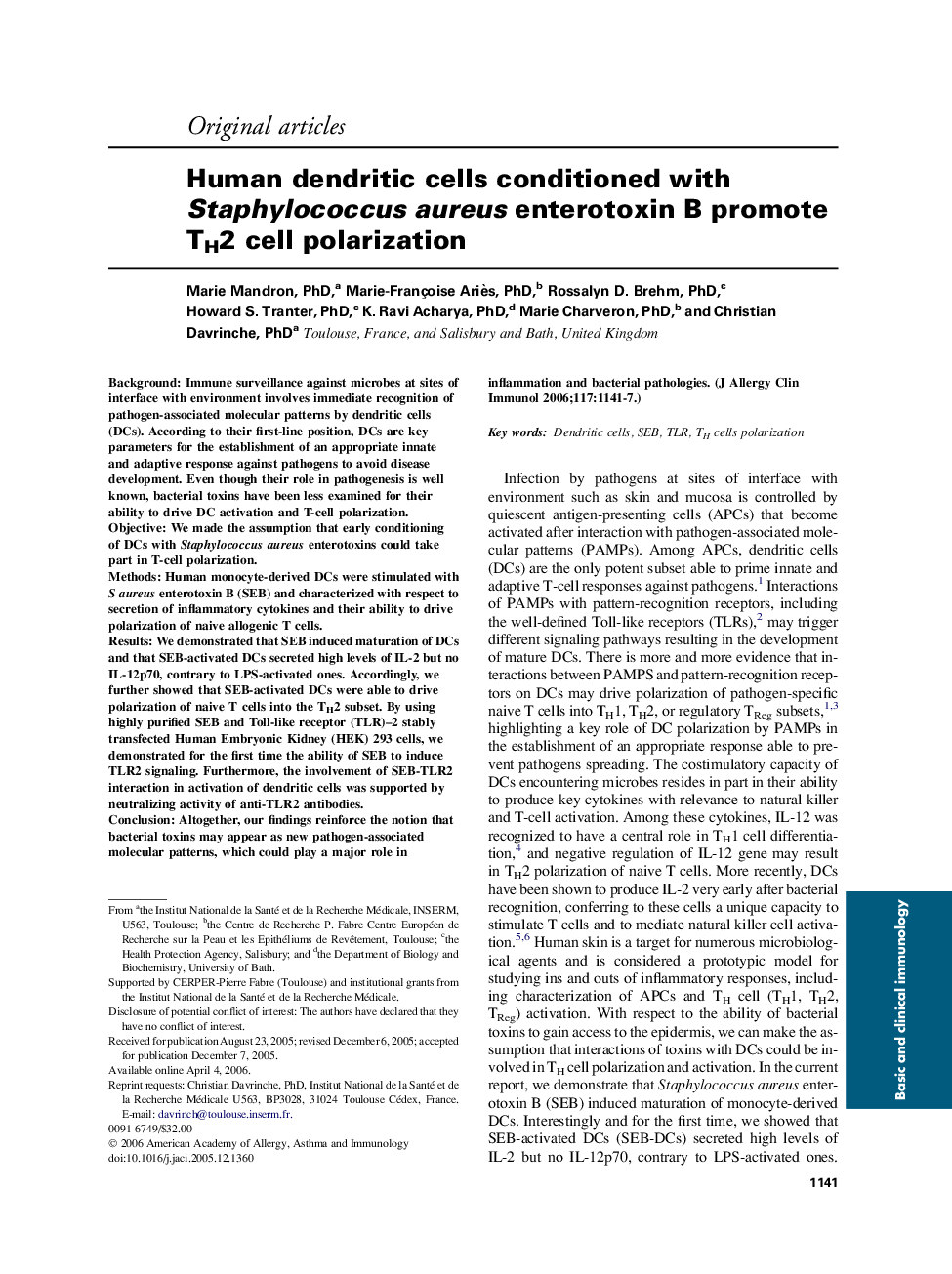| Article ID | Journal | Published Year | Pages | File Type |
|---|---|---|---|---|
| 3203144 | Journal of Allergy and Clinical Immunology | 2006 | 7 Pages |
BackgroundImmune surveillance against microbes at sites of interface with environment involves immediate recognition of pathogen-associated molecular patterns by dendritic cells (DCs). According to their first-line position, DCs are key parameters for the establishment of an appropriate innate and adaptive response against pathogens to avoid disease development. Even though their role in pathogenesis is well known, bacterial toxins have been less examined for their ability to drive DC activation and T-cell polarization.ObjectiveWe made the assumption that early conditioning of DCs with Staphylococcus aureus enterotoxins could take part in T-cell polarization.MethodsHuman monocyte-derived DCs were stimulated with S aureus enterotoxin B (SEB) and characterized with respect to secretion of inflammatory cytokines and their ability to drive polarization of naive allogenic T cells.ResultsWe demonstrated that SEB induced maturation of DCs and that SEB-activated DCs secreted high levels of IL-2 but no IL-12p70, contrary to LPS-activated ones. Accordingly, we further showed that SEB-activated DCs were able to drive polarization of naive T cells into the TH2 subset. By using highly purified SEB and Toll-like receptor (TLR)–2 stably transfected Human Embryonic Kidney (HEK) 293 cells, we demonstrated for the first time the ability of SEB to induce TLR2 signaling. Furthermore, the involvement of SEB-TLR2 interaction in activation of dendritic cells was supported by neutralizing activity of anti-TLR2 antibodies.ConclusionAltogether, our findings reinforce the notion that bacterial toxins may appear as new pathogen-associated molecular patterns, which could play a major role in inflammation and bacterial pathologies.
